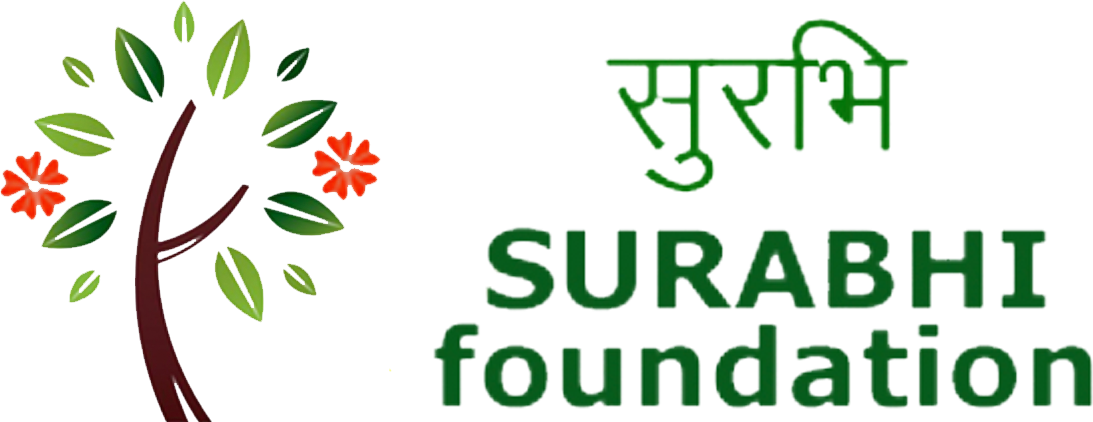The Journey of SURABHI: From Chemical Manufacturing to Sustainable Rural Development
In 2009, India was at a crossroads. The Prime Minister of India at the time, Dr. Manmohan Singh, famously stated that India needs economic reform, but: “Where will we find the money for this? Money does not grow on trees”. It was a statement that conveyed a sense of crisis, prompting one successful entrepreneur to rethink his life’s purpose. The founder of SURABHI Foundation, a thriving chemical manufacturer with clients across the United States, Germany, China, and Turkey, decided to shift his focus from profit to impact. This pivotal moment marked the beginning of a journey toward addressing rural income inequality and empowering farmers in India.
A Turning Point: From Business to Social Impact
The founder’s chemical manufacturing business was doing exceptionally well. The company was known for high-quality chemical products, exporting globally and competing with multinational companies. However, the Prime Minister’s statement prompted him to take a closer look at the state of rural India. He began to study the country’s agricultural challenges, reading extensively and traveling across India to understand the conditions faced by rural communities. He met with farmers, activists, and experts, seeking insights into why Indian agriculture was struggling.
During his travels, he found that farmers working in small groups or clusters, particularly those who owned cows, were more resilient and successful. These farmers were not just relying on crop income; they were supplementing it with cow-based activities, which provided milk, manure, and a sense of stability. This cow-based model, he realized, was a key to sustainable rural income.
The Birth of the Cow-Based Economy Model
In September 2009, the founder organized a conference, bringing together government agricultural specialists, rural development experts, and farmers. Over three days, they discussed the challenges and potential solutions for improving rural incomes. The outcome was a simple yet powerful idea: a cow-based economy model. This model emphasized that every farmer should own at least two cows. These cows would provide milk for the family, manure for organic farming, and a source of income from selling surplus milk. The model ensured that even if crops failed, families would have milk for nutrition and manure to maintain soil fertility.
With this concept in mind, the founder established the SURABHI Foundation—an acronym for Sustainable Urban and Rural Agriculture, Business, and Health Initiatives. The goal was to create a bridge between urban and rural communities, encouraging urban consumers to purchase high-quality, nutrient-rich products from rural farmers, thereby creating a flow of income from urban to rural areas.
The First Trial: Selling Indigenous Cow Milk in South Delhi
To put the cow-based model into practice, SURABHI Foundation started a pilot project. They gathered 200 liters of pure indigenous cow milk daily from rural farmers and brought it to South Delhi, an area known for health-conscious residents. The founder personally went door-to-door, introducing the milk to potential customers and explaining the benefits of pure, unprocessed milk. Despite initial skepticism, the quality of the milk spoke for itself. Within a short time, they were able to sell the milk at 36 rupees per liter—significantly higher than the market price of 28 rupees per liter. Though the pilot project was not profitable at first, the demand grew as customers realized the nutritional value of the milk.
After three months, the trial was stopped, but the impact had been made. The residents of South Delhi insisted on continuing the supply, even offering to pay a higher price. This acceptance validated the cow-based economy model and demonstrated that there was a market for high-quality, indigenous cow milk in urban areas.
Scaling Up: Challenges and Evolution
The success of the initial trial led to more farmers wanting to join the initiative. However, a new challenge emerged: a shortage of indigenous cows. The demand for cows increased as more farmers realized the benefits of the model. To address this, SURABHI Foundation started focusing on breeding bulls to ensure a steady supply of healthy cows. They also collaborated with traditional caretakers of cows, ensuring that the breeding programs were sustainable and respected local customs.
Over the past 14 years, the cow-based economy model has gained widespread acceptance. Today, indigenous cow milk is available not only in Delhi but also in many other metropolitan and tier-two cities across India. People have become increasingly aware of the health benefits of A2 milk, which is produced by indigenous cows and is considered superior to the A1 milk found in many Western countries.
A Vision for the Future
SURABHI Foundation’s journey from chemical manufacturing to sustainable rural development is a testament to the power of a single idea to create lasting change. By promoting a cow-based economy, the foundation has helped improve rural incomes, ensure nutritional security for farming families, and create a sustainable model that benefits both urban and rural communities. The founder’s vision of siphoning income from urban to rural areas, while providing high-quality nutrition to urban consumers, has proven to be a win-win situation—a true example of sustainable development in action.
SURABHI continues to work towards expanding its initiatives, with a focus on empowering rural communities, promoting indigenous practices, and bridging the gap between urban and rural India. Through innovative approaches and a deep commitment to social impact, SURABHI is making a difference, one community at a time.
